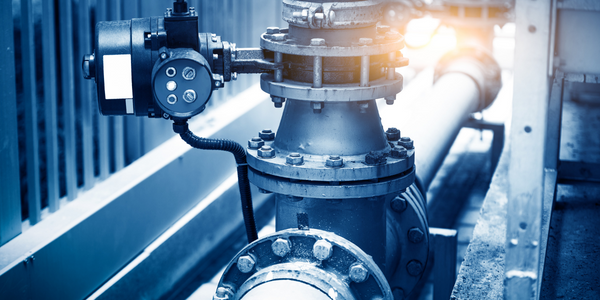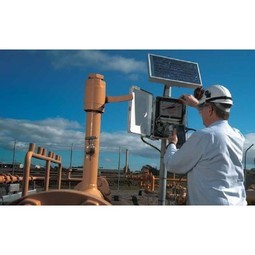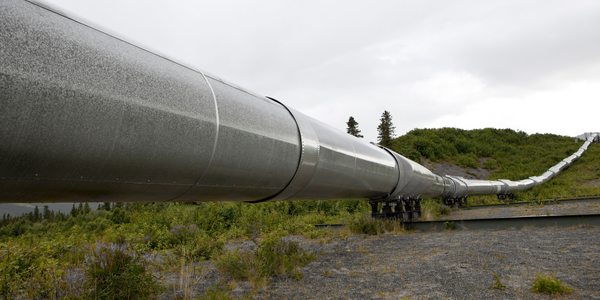Customer Company Size
Large Corporate
Region
- America
Country
- United States
- Canada
Product
- nGeniusONE service assurance platform
- nGenius for Flows
- InfiniStreamNG appliances
- nGenius 5000 series Packet Flow Switch
Tech Stack
- Advanced Metering Infrastructure (AMI)
- Smart Meters
- Data Centers
Implementation Scale
- Enterprise-wide Deployment
Impact Metrics
- Customer Satisfaction
- Cost Savings
- Productivity Improvements
Technology Category
- Analytics & Modeling - Real Time Analytics
- Networks & Connectivity - Network Management & Analysis Software
- Sensors - Utility Meters
Applicable Industries
- Utilities
- Oil & Gas
Applicable Functions
- Logistics & Transportation
- Quality Assurance
Use Cases
- Advanced Metering Infrastructure
- Energy Management System
- Real-Time Location System (RTLS)
Services
- System Integration
- Testing & Certification
About The Customer
This natural gas and electrical power company serves customers across nearly half of the U.S. states and parts of Canada. In addition to electricity and gas, they also provide many other integrated energy solutions to customers such as pipelines, storage, etc. They are committed to finding better ways to deliver safe, reliable energy to homes and businesses, along with creating a diverse infrastructure, including clean renewable energy. The company is taking advantage of digital transformation to improve the end-user experience, enhance network performance, cut costs, and provide continuous improvement across the business. Their current Advanced Metering Infrastructure (AMI) provides bi-directional communication for over 3 million smart meters, allowing both detailed billing and customer access to detailed energy usage, such as heat and air conditioning costs.
The Challenge
The company was preparing to roll out a new Advanced Metering Infrastructure (AMI) to provide more detailed billing for their customers as well as detect degradations and outages, allowing faster response without customers reporting incidents. In addition, the AMI implementation would improve customer service by giving customers access to their usage information online. Armed with own analytics, customers could better understand and control their energy usage for things like heat, air conditioning, appliances and general consumption. In addition, the AMI implementation was key to maintaining the company’s good reputation as outages over a certain magnitude must be reported by federal compliance standards. IT needed to validate their ability to manage the AMI proactively in pre-production to ensure they would not risk internal or customer-facing problems. It was critical to validate the ability to proactively understand if there were problems with data from the smart meters in the AMI not coming through the gateways in the data centers prior to production deployment.
The Solution
In order to validate service assurance capabilities for the critical AMI services prior to production and provide service assurance in production, this energy company deployed additional InfiniStreamNG appliances and an nGenius Packet Flow Switch to their existing nGeniusONE solution. During pre-production testing, the solution instantaneously identified, and alarmed on lost communication to the meters, proving the system would work. When AMI was put into production, the solution continued to provide immediate notification of failures, allowing IT to address them quickly and maintain their Five 9’s internal SLAs on twice-daily meter reads. Typically, the failures were related to AMI communications gateways in the data center. When issues arose, and IT was notified by the nGenius solution, they were able to quickly troubleshoot and re-mesh the system to restore communication. The IT team uses NETSCOUT service dependency mapping to view the full AMI service - from smart metering, to SAP connections, and the backend databases - to fully understand interdependencies and speed troubleshooting.
Operational Impact
Quantitative Benefit

Case Study missing?
Start adding your own!
Register with your work email and create a new case study profile for your business.
Related Case Studies.

Case Study
Taking Oil and Gas Exploration to the Next Level
DownUnder GeoSolutions (DUG) wanted to increase computing performance by 5 to 10 times to improve seismic processing. The solution must build on current architecture software investments without sacrificing existing software and scale computing without scaling IT infrastructure costs.

Case Study
IoT Solutions for Smart City | Internet of Things Case Study
There were several challenges faced: It is challenging to build an appliance that can withstand a wide range of voltage fluctuations from as low at 90v to as high as 320v. Since the device would be installed in remote locations, its resilience was of paramount importance. The device would have to deal with poor network coverage and have the ability to store and re-transmit data if networks were not available, which is often the case in rural India. The device could store up to 30 days of data.

Case Study
Automation of the Oguz-Gabala-Baku water pipeline, Azerbaijan
The Oguz-Gabala-Baku water pipeline project dates back to plans from the 1970’s. Baku’s growth was historically driven by the booming oil industry and required the import of drinking water from outside of the city. Before the construction of the pipeline, some 60 percent of the city’s households received water for only a few hours daily. After completion of the project, 75 percent of the two million Baku residents are now served around the clock with potable water, based on World Health Organization (WHO) standards. The 262-kilometer pipeline requires no pumping station, but uses the altitude differences between the Caucasian mountains and the capital to supply 432,000 m³/d to the Ceyranbatan water reservoir. To the people of Baku, the pipeline is “the most important project not only in 2010, but of the last 20 years.”

Case Study
GPRS Mobile Network for Smart Metering
Around the world, the electricity supply industry is turning to ‘smart’ meters to lower costs, reduce emissions and improve the management of customer supplies. Smart meters collect detailed consumption information and using this feedback consumers can better understand their energy usage which in turn enables them to modify their consumption to save money and help to cut carbon emissions. A smart meter can be defined in many ways, but generally includes an element of two-way communication between the household meter and the utility provider to efficiently collect detailed energy usage data. Some implementations include consumer feedback beyond the energy bill to include online web data, SMS text messages or an information display in consumers’ premises. Providing a cost-effective, reliable communications mechanism is one of the most challenging aspects of a smart meter implementation. In New Zealand, the utilities have embraced smart metering and designed cost effective ways for it to be implemented. The New Zealand government has encouraged such a move to smart metering by ensuring the energy legislation is consistent with the delivery of benefits to the consumer while allowing innovation in this area. On the ground, AMS is a leader in the deployment of smart metering and associated services. Several of New Zealand’s energy retailers were looking for smart metering services for their residential and small business customers which will eventually account for over 500,000 meters when the multi-year national deployment program is concluded. To respond to these requirements, AMS needed to put together a solution that included data communications between each meter and the central data collection point and the solution proposed by Vodafone satisfied that requirement.

Case Study
Remote Wellhead Monitoring
Each wellhead was equipped with various sensors and meters that needed to be monitored and controlled from a central HMI, often miles away from the assets in the field. Redundant solar and wind generators were installed at each wellhead to support the electrical needs of the pumpstations, temperature meters, cameras, and cellular modules. In addition to asset management and remote control capabilities, data logging for remote surveillance and alarm notifications was a key demand from the customer. Terra Ferma’s solution needed to be power efficient, reliable, and capable of supporting high-bandwidth data-feeds. They needed a multi-link cellular connection to a central server that sustained reliable and redundant monitoring and control of flow meters, temperature sensors, power supply, and event-logging; including video and image files. This open-standard network needed to interface with the existing SCADA and proprietary network management software.








